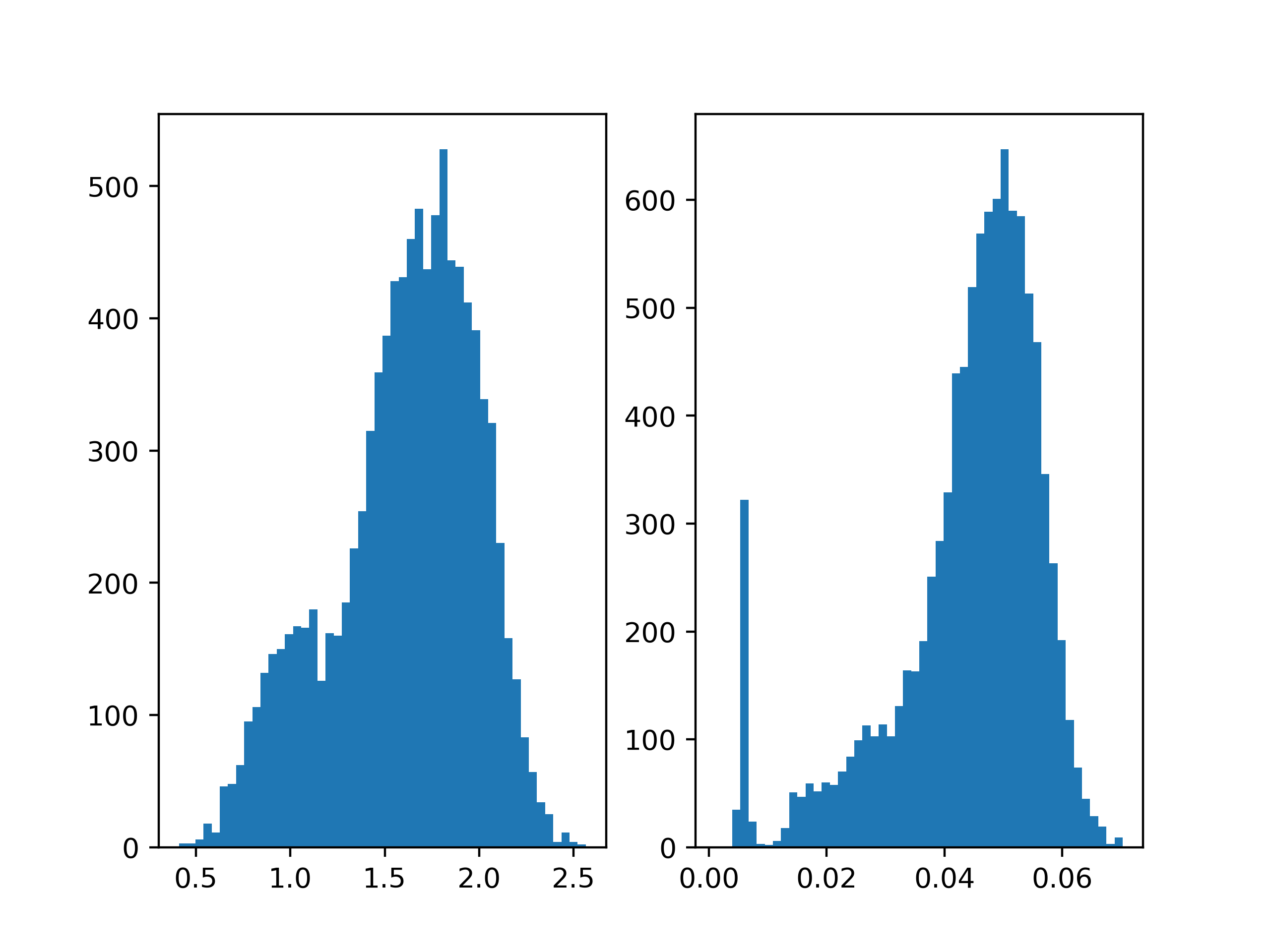Distributions are not usually classified as "good" or "bad." Data is what it is.
As for your question: Generally, if you want to compare the "tails" of two distributions, a good starting point is the kurtosis statistic. This only works if you are comparing two similar samples -- this is NOT the case in your data.
Using the kurtosis statistic in this comparison would require some modification of your data (especially removing observations), which is generally not advised. Note: the data on the left appears to be bi-modal (there is definitely two sub-populations here), whereas the data on the right appears to have a lot of outliers on the left. The kurtosis statistic for the distribution on the right plot would prove to be quite useless, as it would essentially capture the fact that you have outliers on the left.
Your best bet here, if you really wish to continue with the comparison, would be to compare the quantiles, say the range between the 90% quantile and the 99% quantile as a measure of "falling off more quickly on the right." The choice of quantiles would be quite arbitrary, but it will get the point across.

